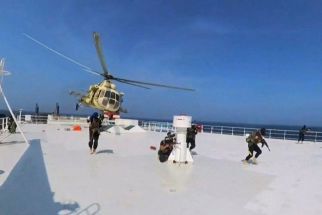South Korea funds disaster mitigation system
March 4, 2007 | 12:00am
The country will unveil in May a South Korean-funded early warning system for natural disasters to help in the protection of agriculture and water resources.
Sungho Choi, resident representative to the Philippines of the Korea International Cooperation Agency (Koica), said the $1-million project involves training and providing new equipment for the field personnel of the Philippine Atmospheric, Geophysical and Astronomical Services Administration or Pagasa.
Sungho said it was the first Koica project of such kind in the Philippines. Koica briefed officials of the Department of Science and Technology led by Secretary Estrella Alabastro and members of the media yesterday on the progress of the project.
The new monitoring equipment will form a network of early warning systems for agriculture and water resources, to initially cover the provinces of Aurora, Iloilo and Lanao del Norte.
Pagasa said the areas were chosen because they were considered the most vulnerable to extreme weather and climate phenomena like drought, typhoons, and floods.
The early warning system will provide local government units with relevant information and advisories on extreme weather changes to help them plan and mitigate the impact of disastrous weather phenomena.
The Philippines is no stranger to typhoons and monsoon rains, which usually cause heavy damage to crops and livelihood in the rural areas.
Meanwhile, Sungho said the Philippines should enhance its tourism potential by developing its "untouched" coastal and "behind-the mountain’’ areas into new tourist destinations.
Sungho said more investments in infrastructure would allow greater tourist access to these destinations. He said the country is an ideal surfing destination, especially in February and March.
He said a proof of South Korea’s strong interest in the Philippines’ tourism potential is its $3-million investment in a new domestic airport in Busuanga, Palawan, which will be inaugurated "in the next two weeks.’’
Sungho Choi, resident representative to the Philippines of the Korea International Cooperation Agency (Koica), said the $1-million project involves training and providing new equipment for the field personnel of the Philippine Atmospheric, Geophysical and Astronomical Services Administration or Pagasa.
Sungho said it was the first Koica project of such kind in the Philippines. Koica briefed officials of the Department of Science and Technology led by Secretary Estrella Alabastro and members of the media yesterday on the progress of the project.
The new monitoring equipment will form a network of early warning systems for agriculture and water resources, to initially cover the provinces of Aurora, Iloilo and Lanao del Norte.
Pagasa said the areas were chosen because they were considered the most vulnerable to extreme weather and climate phenomena like drought, typhoons, and floods.
The early warning system will provide local government units with relevant information and advisories on extreme weather changes to help them plan and mitigate the impact of disastrous weather phenomena.
The Philippines is no stranger to typhoons and monsoon rains, which usually cause heavy damage to crops and livelihood in the rural areas.
Meanwhile, Sungho said the Philippines should enhance its tourism potential by developing its "untouched" coastal and "behind-the mountain’’ areas into new tourist destinations.
Sungho said more investments in infrastructure would allow greater tourist access to these destinations. He said the country is an ideal surfing destination, especially in February and March.
He said a proof of South Korea’s strong interest in the Philippines’ tourism potential is its $3-million investment in a new domestic airport in Busuanga, Palawan, which will be inaugurated "in the next two weeks.’’
BrandSpace Articles
<
>
- Latest
- Trending
Trending
Latest
Trending
Latest
Recommended































